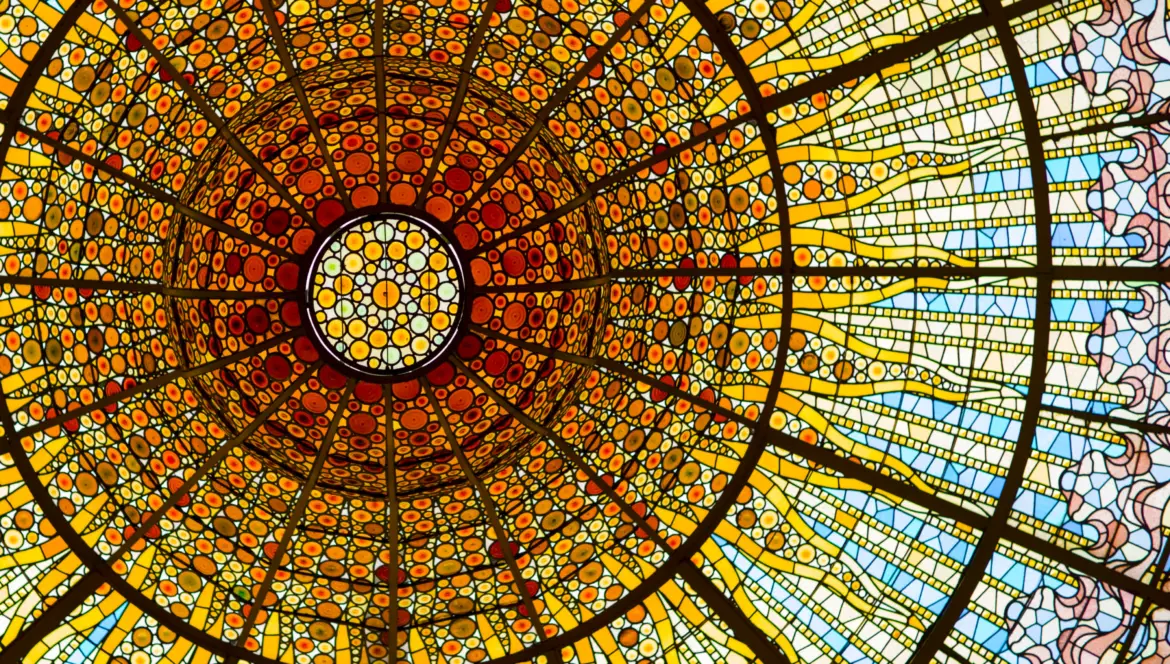Hola, my friends! Barcelona is a city that doesn’t just exist, it performs. Walk its streets and you’ll notice it immediately: façades undulate like waves, iron balconies twist into vines, and stained-glass windows bloom with color. Every corner hums with creativity. At the heart of this artistry lies Catalan Modernism, or Modernisme Català, a movement that turned stone into poetry and transformed Barcelona into one of the world’s most imaginative cities. Catalan Modernism wasn’t merely about style or architecture; it was a philosophy, a declaration, a dream made visible.
I remember standing on Passeig de Gràcia, between Casa Batlló and Casa Amatller, feeling the hum of traffic and the golden sun reflecting off those sculpted façades. It was in that moment I realized: Catalan Modernism wasn’t just Barcelona’s past, it’s her living soul, still breathing through every curve, color, and mosaic.
Origins of a Movement
To understand Catalan Modernism, you need to picture Barcelona at the end of the 19th century. The city was booming. The Industrial Revolution had filled it with new wealth, and with that wealth came ambition. Ildefons Cerdà created a visionary plan for Barcelona’s expansion with the Eixample district, featuring wide, symmetrical boulevards filled with sunlight and promise.
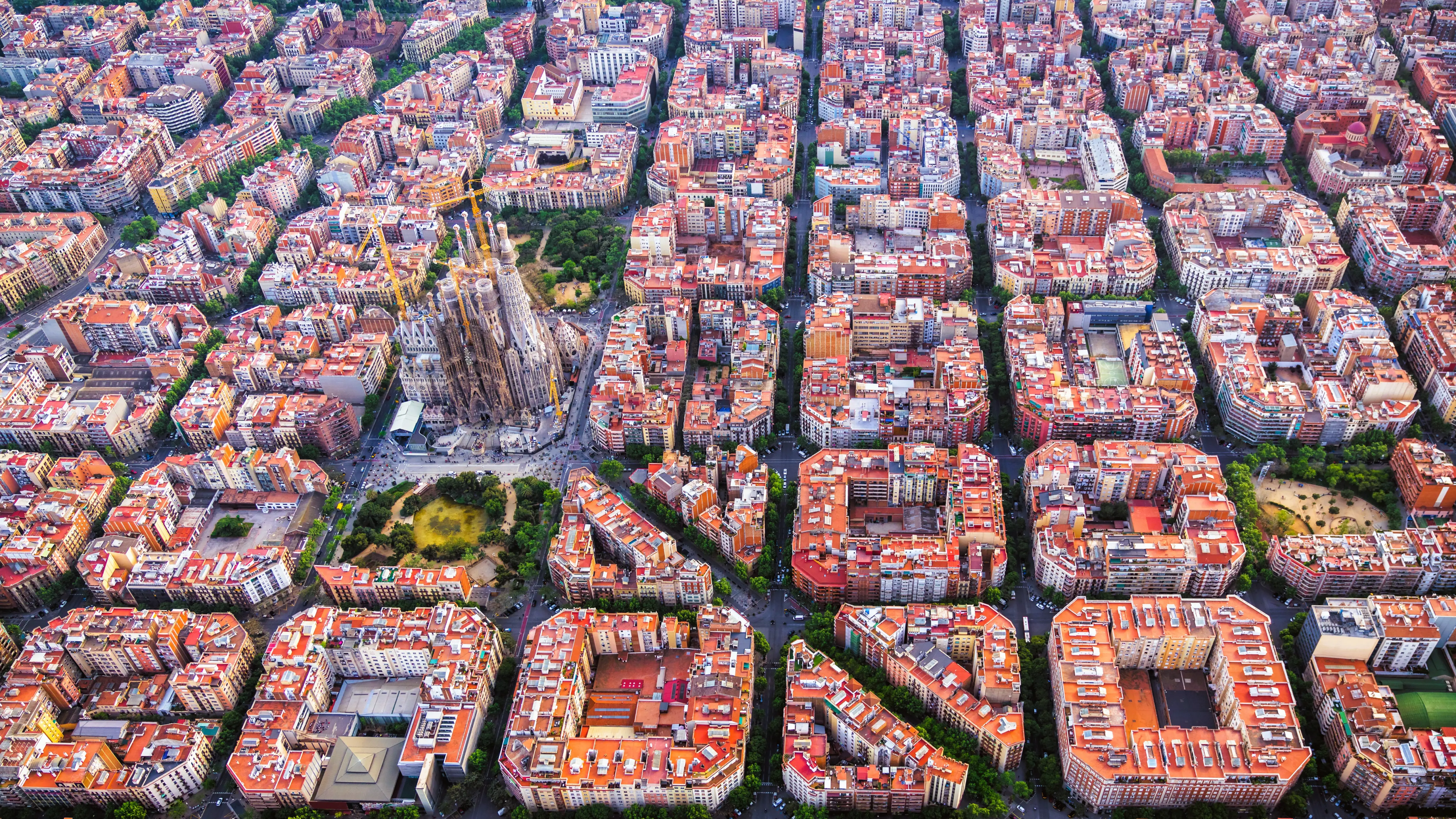
At the same time, a cultural awakening was taking root. La Renaixença, a pro-Catalan movement that lasted from the 1830s until the 1880s, advocated for the revival of Catalan language, art, and heritage. As La Renaixença transitioned, it branched into other cultural movements, including Catalan Modernism. Writers, musicians, and architects sought to celebrate the region’s distinct identity through beauty.
From this creative spark came Catalan Modernism, Barcelona’s unique contribution to Europe’s fin-de-siècle artistic movements. Catalan Modernism merged tradition with modernity as a distinctive artistic, architectural, and cultural style, celebrating nature, craftsmanship, and faith. It blended romanticism with engineering, folklore with innovation, a distinctive approach that reflected Catalonia’s proud cultural identity.
The 1888 Universal Exhibition, held in what is now Parc de la Ciutadella, became the great showcase for this emerging movement. Catalan Modernism announced that Barcelona was no longer a provincial port, it was a city of visionaries, where the industrial age could coexist with dreams and where tradition could inspire bold new creations.
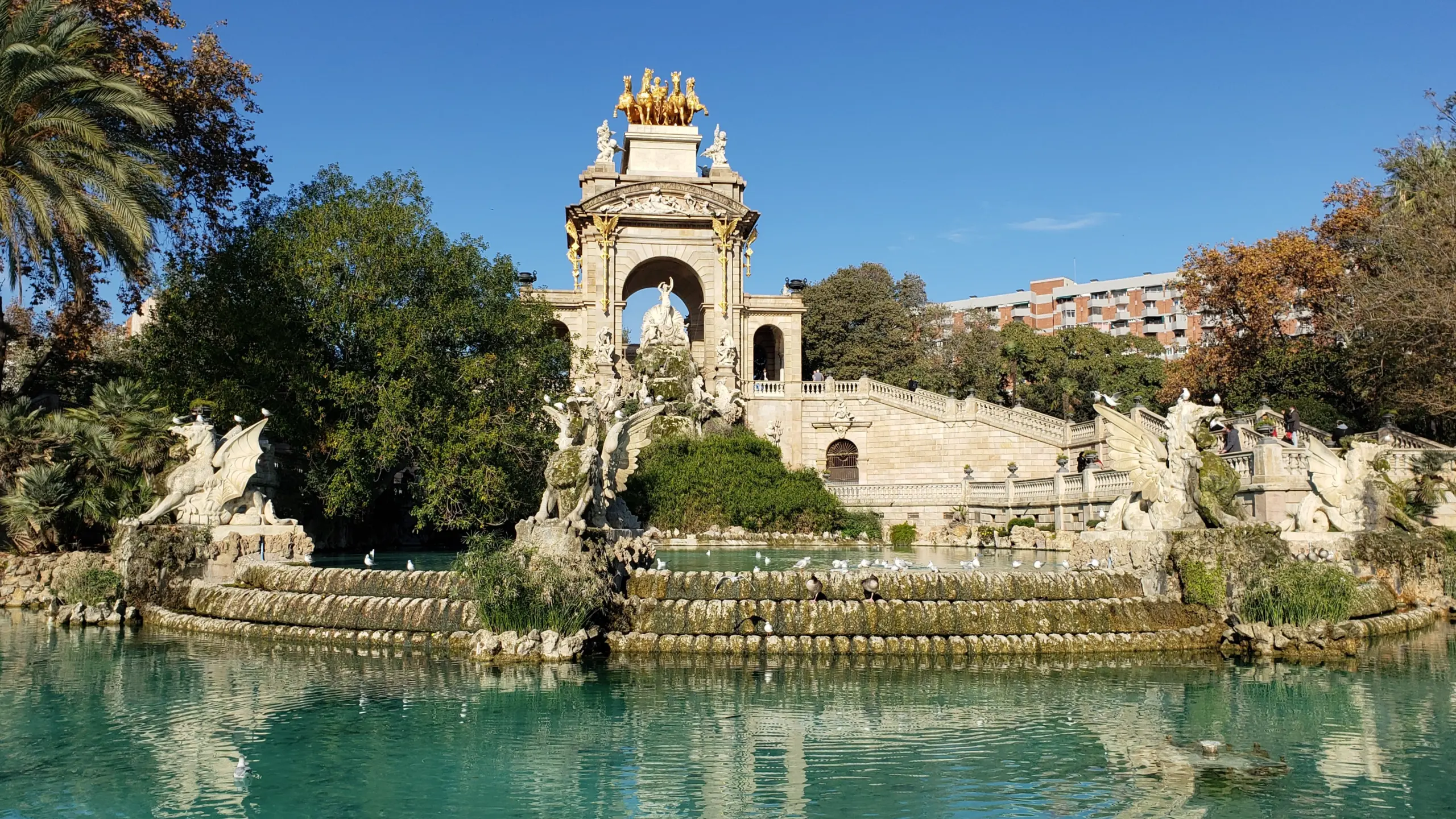
The Philosophy Behind Catalan Modernism
Catalan Modernism wasn’t just about how a building looked; it was about how it felt. The movement believed that art could elevate everyday life, that beauty wasn’t a luxury, it was essential. Its principles can be seen in every masterpiece:
- Organic forms that mimic nature, ceilings that ripple like waves, columns shaped like tree trunks, staircases inspired by seashells.
- Symbolism and spirituality: angels carved into façades, floral patterns representing rebirth, dragons guarding balconies as protectors of Catalan folklore.
- Total harmony: architecture, sculpture, furniture, and light fixtures designed together, each an extension of the other.
- Handcrafted perfection: every tile, iron gate, and stained-glass window made by artisans who treated their craft as sacred.
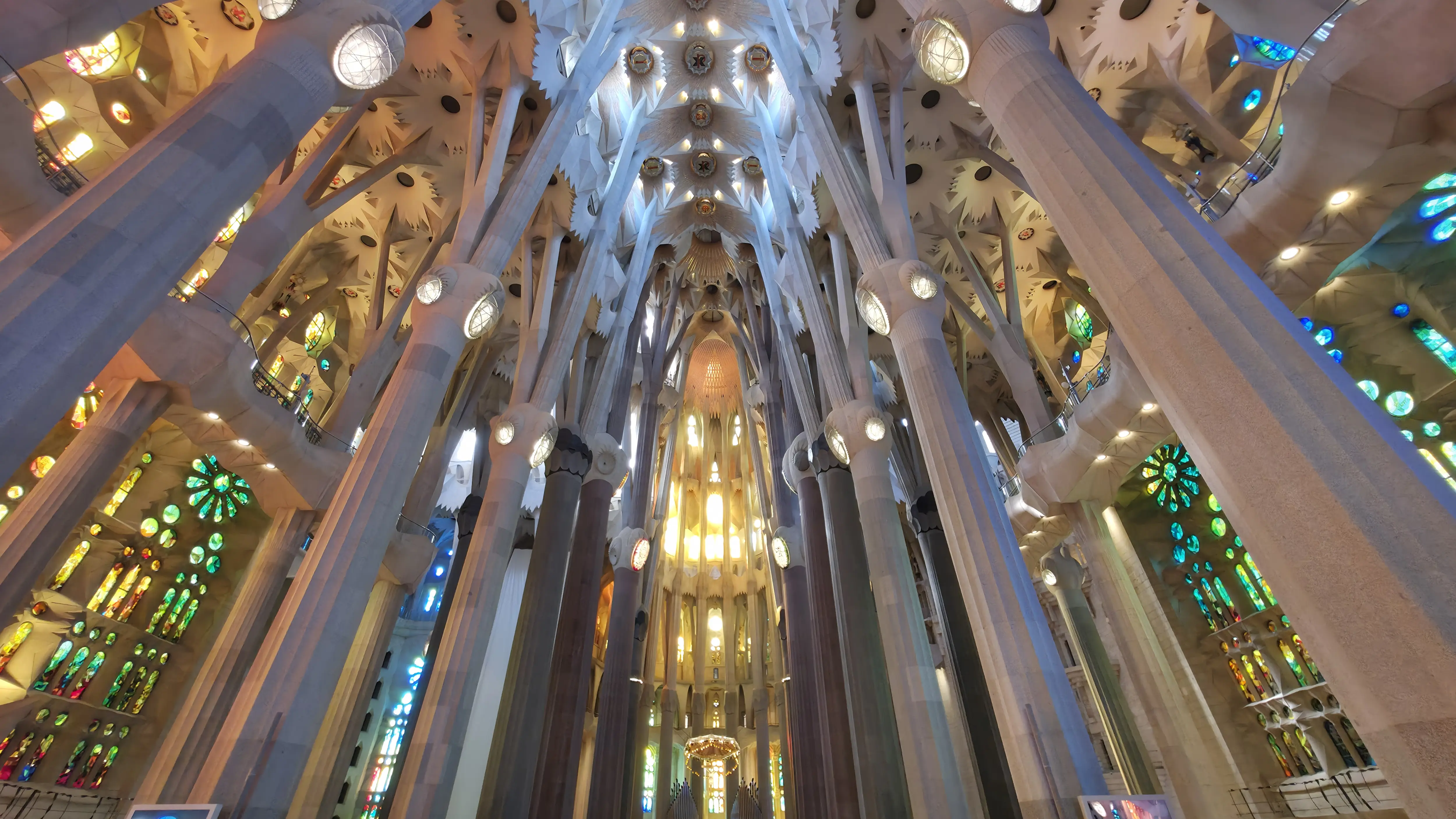
For Antoni Gaudí, nature was the ultimate architect. “There are no straight lines in nature,” he said, and in his world, there would be none in architecture either. While Art Nouveau was often about elegance, Catalan Modernism was about emotion – raw, luminous, and alive!
The Visionaries Who Defined an Era
1. Antoni Gaudí (1852-1926)
Barcelona’s beloved genius and the heart of Catalan Modernism. Deeply religious and endlessly inventive, Gaudí saw God in geometry and divinity in nature. His creations – from the kaleidoscopic Casa Batlló to the fluid, dreamlike La Pedrera, and of course, his eternal masterpiece, the Sagrada Família – reveal an imagination that defied convention. To stand inside one of his buildings is to step into a living organism, a temple of light and movement.
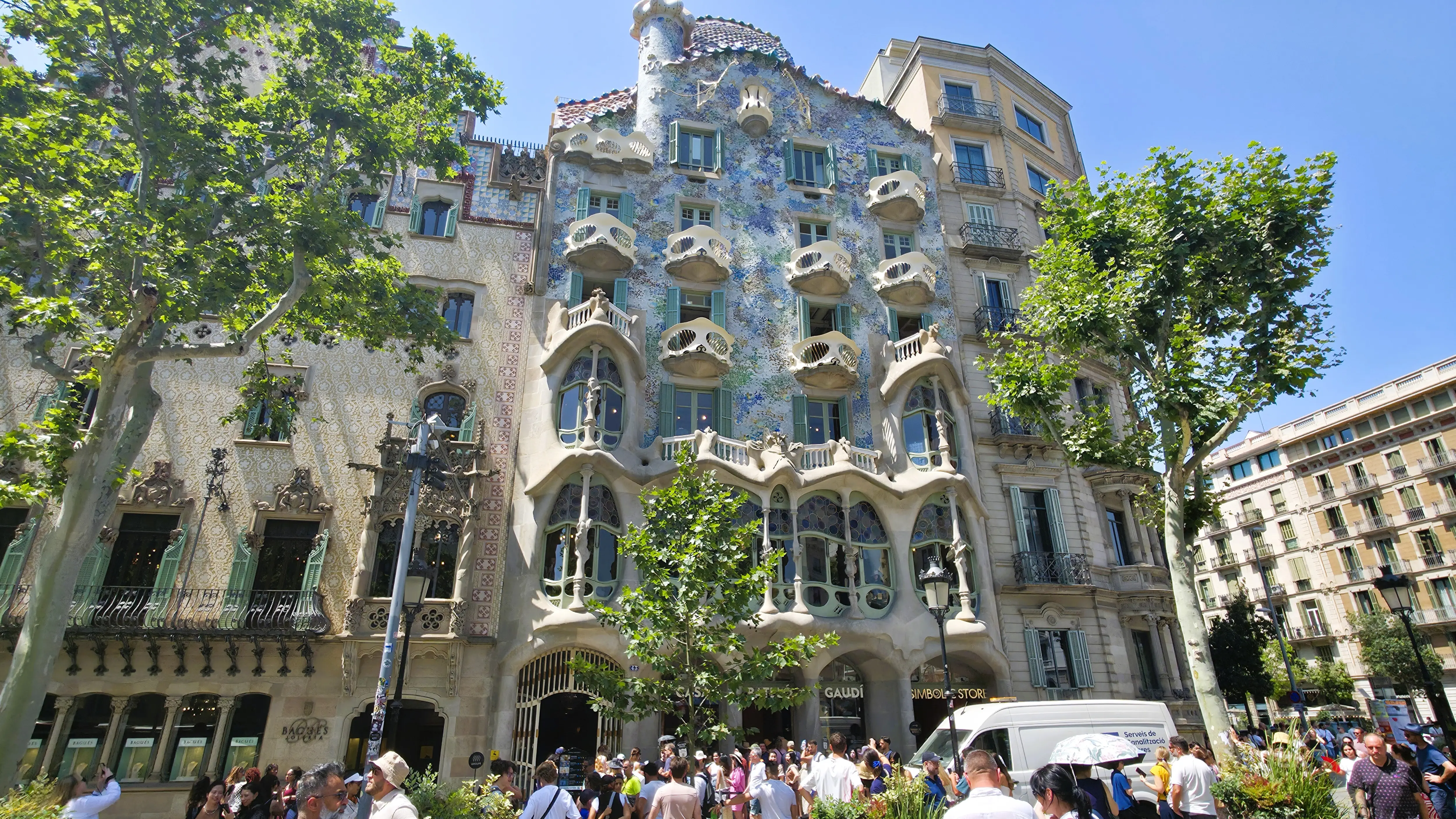
2. Lluís Domènech i Montaner (1850-1923)
An intellectual and teacher as much as an architect, Domènech i Montaner believed art should serve people. His Palau de la Música Catalana is a jewel of sound and color, where stained glass, sculpture, and music merge into one. His Hospital de Sant Pau redefined what a hospital could be, a sanctuary for healing the soul as well as the body.
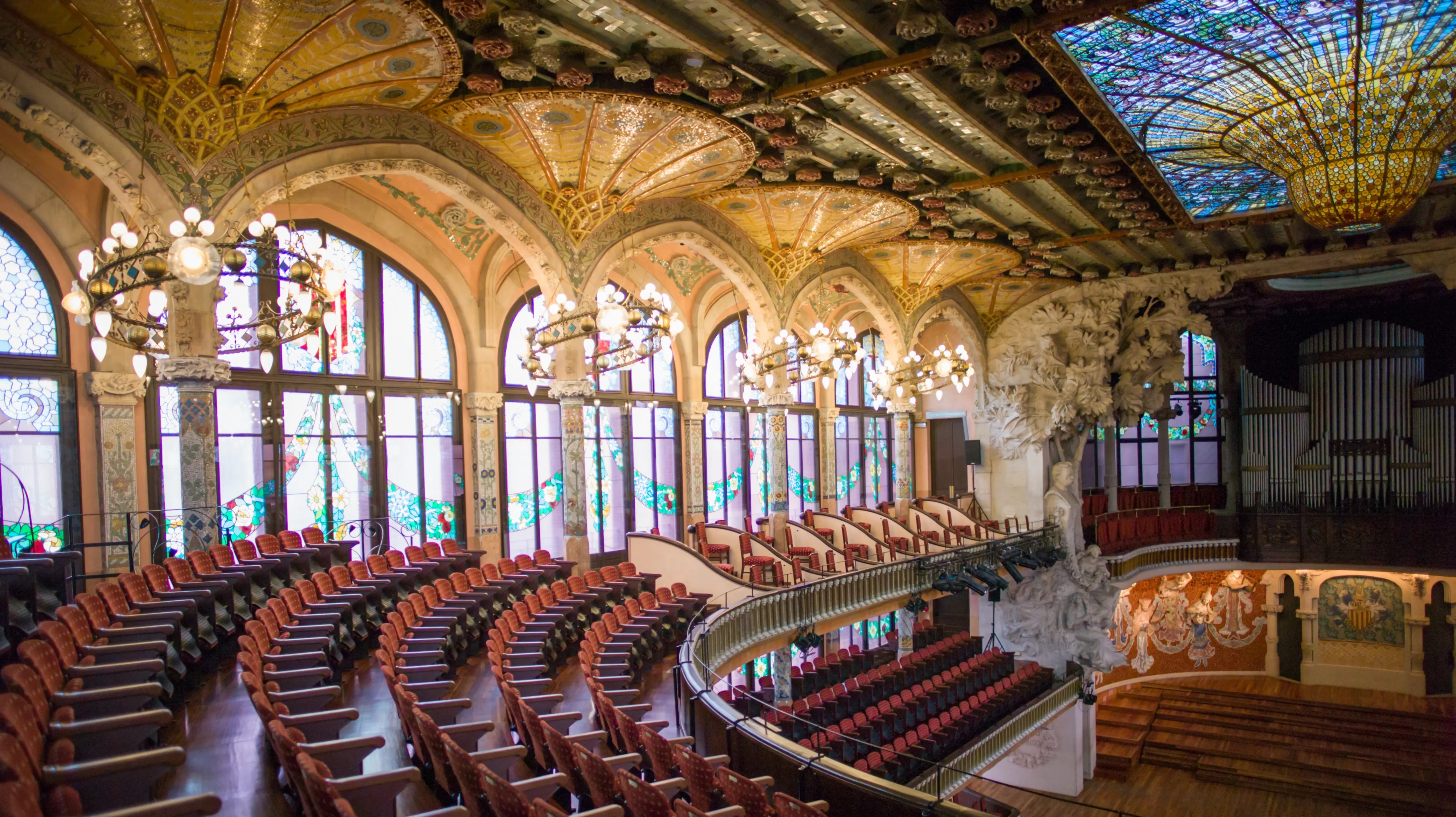
3. Josep Puig i Cadafalch (1867–1956)
Historian, politician, and architect, Puig i Cadafalch wove Catalonia’s medieval past into its modern future. Casa Amatller, next door to Casa Batlló, is a perfect example: part Gothic mansion, part industrial innovation. He believed in architecture as storytelling, and his stories celebrated Catalonia’s pride and independence.
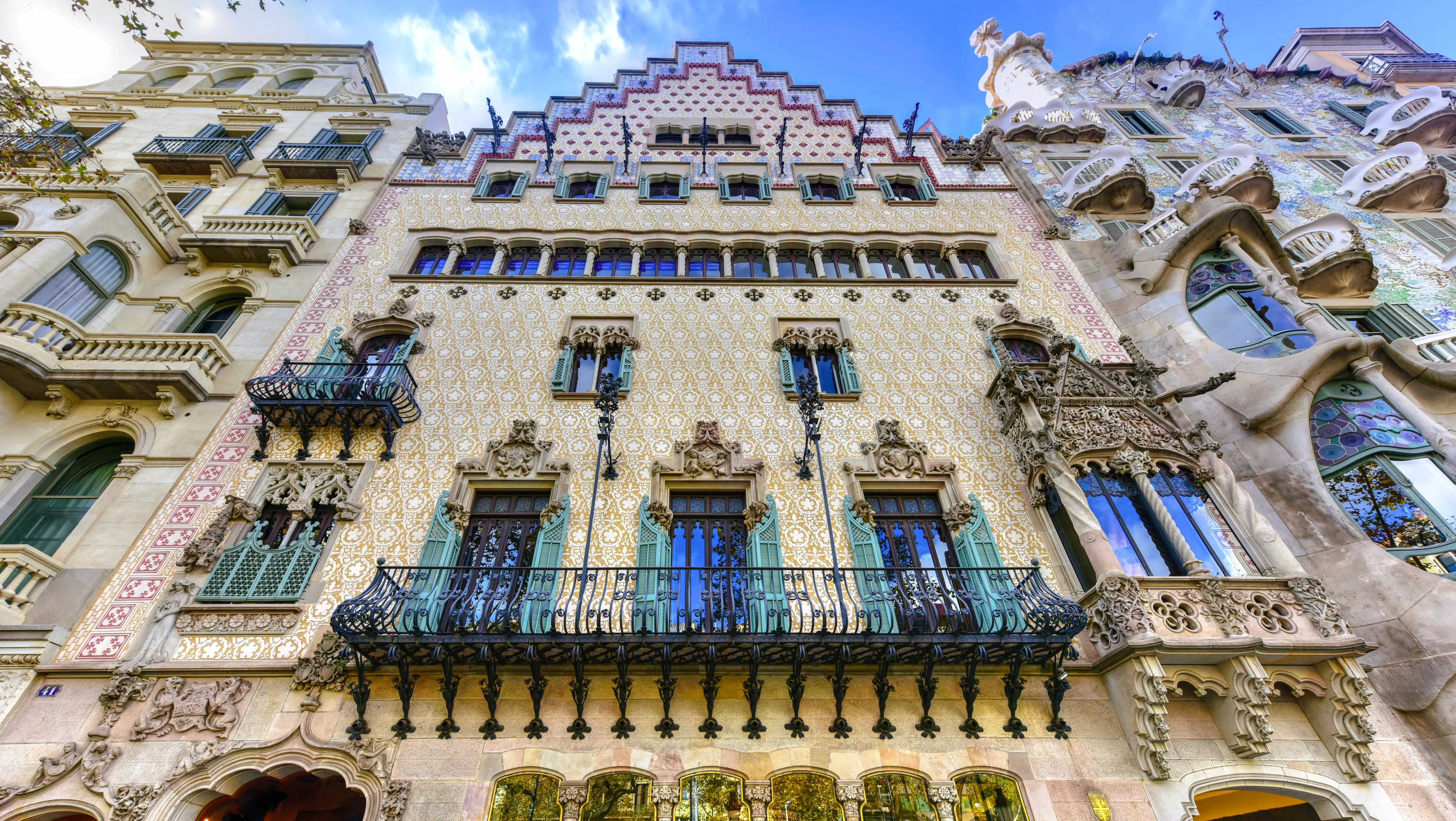
4. Enric Sagnier (1858–1931)
Perhaps the most prolific of all, Sagnier left over 300 buildings across Barcelona: banks, churches, and private homes, including the Palau de Justícia de Barcelona. His style evolved with the times but always carried the spirit of Catalan Modernism’s craftsmanship and grace. His work gave the city its quiet architectural backbone.
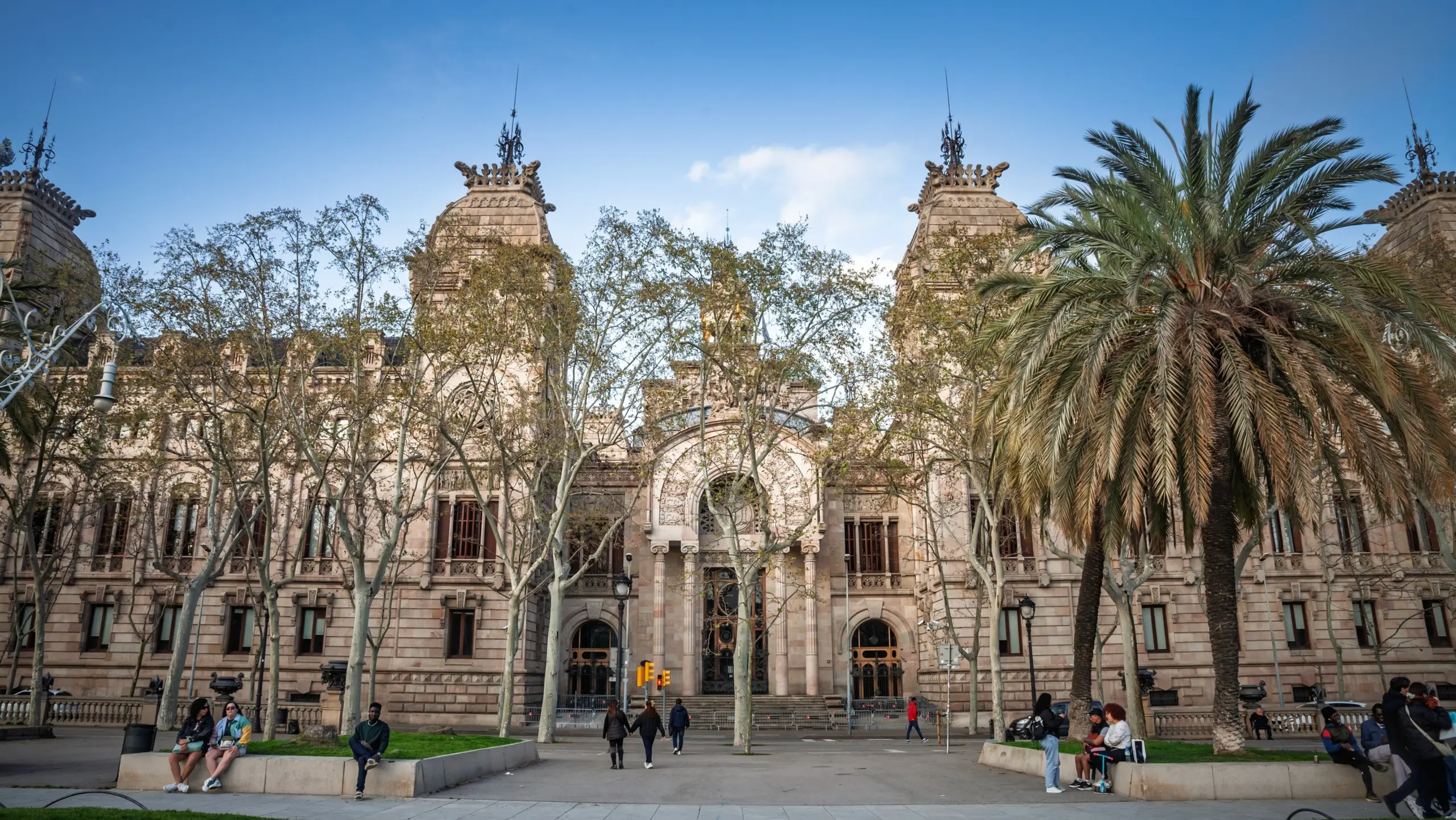
Behind these visionaries were hundreds of artisans – sculptors, glassmakers, tile artists, and metalworkers – who turned imagination into reality. Together, they made Catalan Modernism not just a movement, but a way of life.
Where to See Catalan Modernism in Barcelona
Sagrada Família: Gaudí’s unfinished masterpiece and Barcelona’s beating heart. Step inside and look up, you’ll find yourself beneath a stone forest where light pours through stained glass in shades of gold, green, and blue. Each column feels alive, each façade tells a story of faith, sacrifice, and hope.
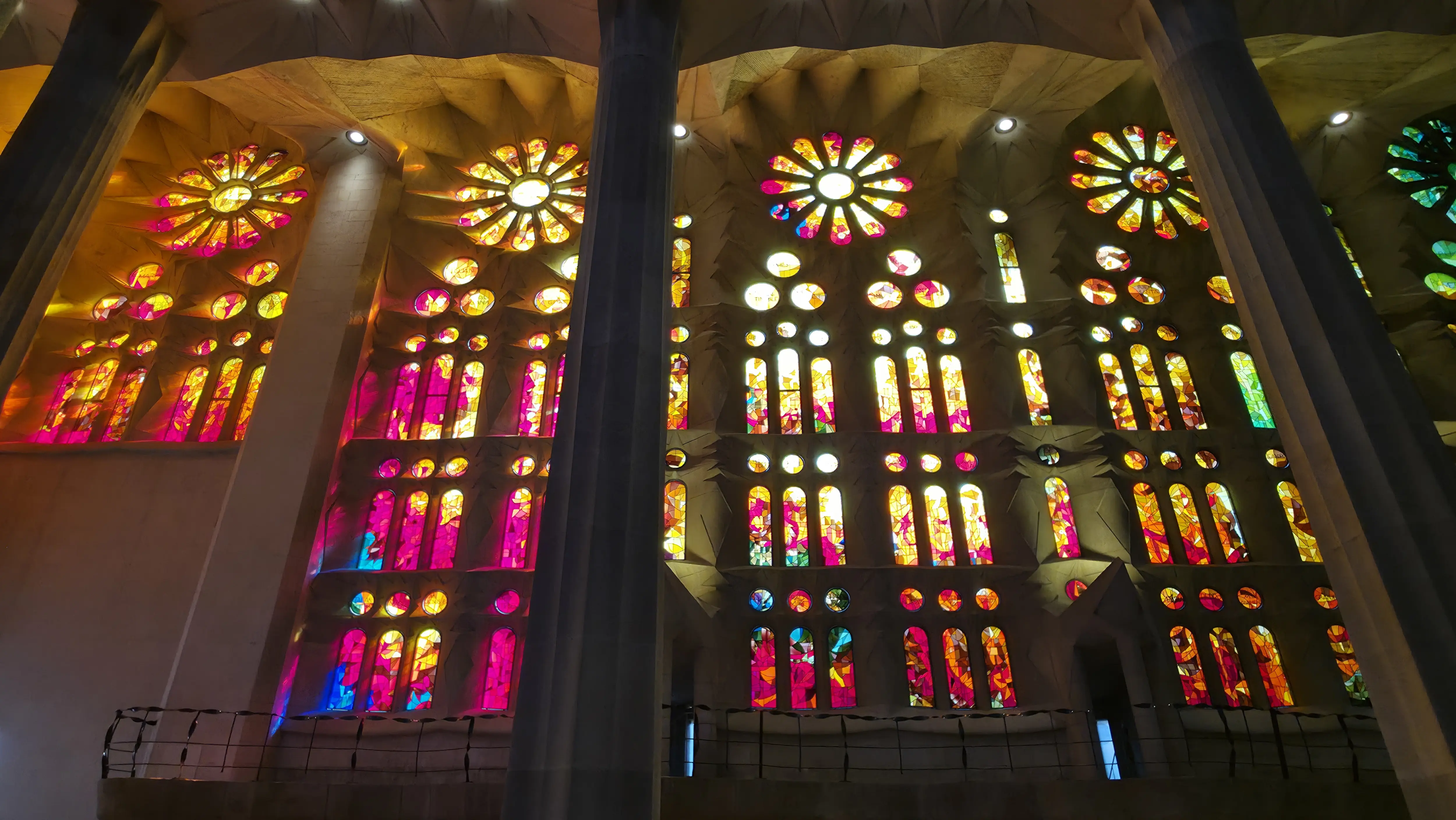
Casa Batlló: Often called the “House of Bones,” it’s a fantasy made of color and curve. The roofline resembles a dragon’s back, while the balconies ripple like sea waves. Inside, even the doors breathe rhythm. As sunlight filters through the glass, you feel as if you’re underwater in a dream.
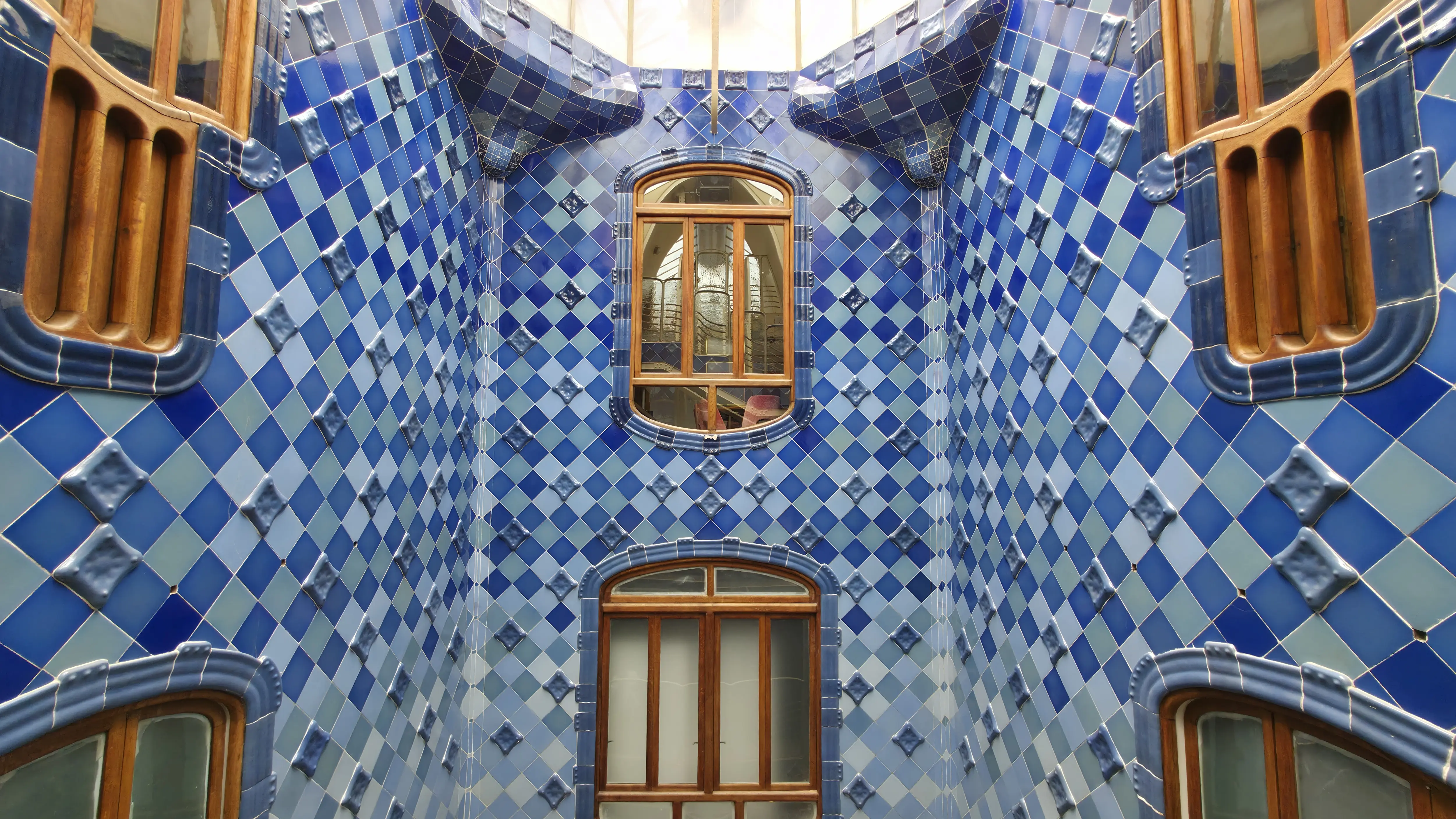
Casa Milà (La Pedrera): A wave frozen in stone. Built between 1906 and 1912, its undulating façade seems to move with the wind. The rooftop, guarded by chimneys shaped like soldiers and illuminated during its Night Experience, offers sweeping views of the city, a dialogue between art and sky.
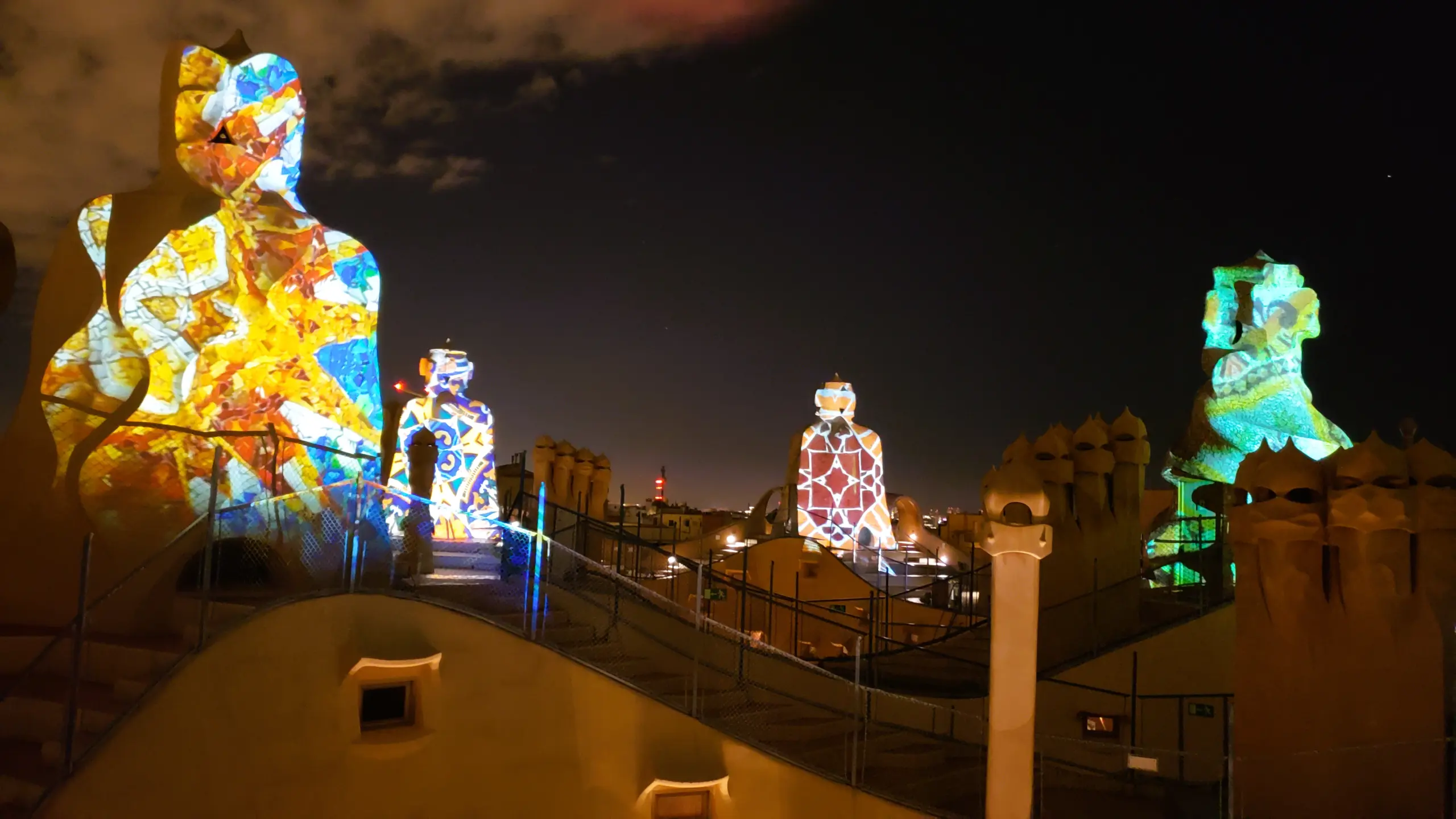
Palau de la Música Catalana: A Modernist concert hall that feels like stepping into a kaleidoscope. The stained-glass dome floods the hall with light as delicate mosaics, floral sculptures, and instruments carved into the walls surround you. It’s one of the few places where architecture feels like music.
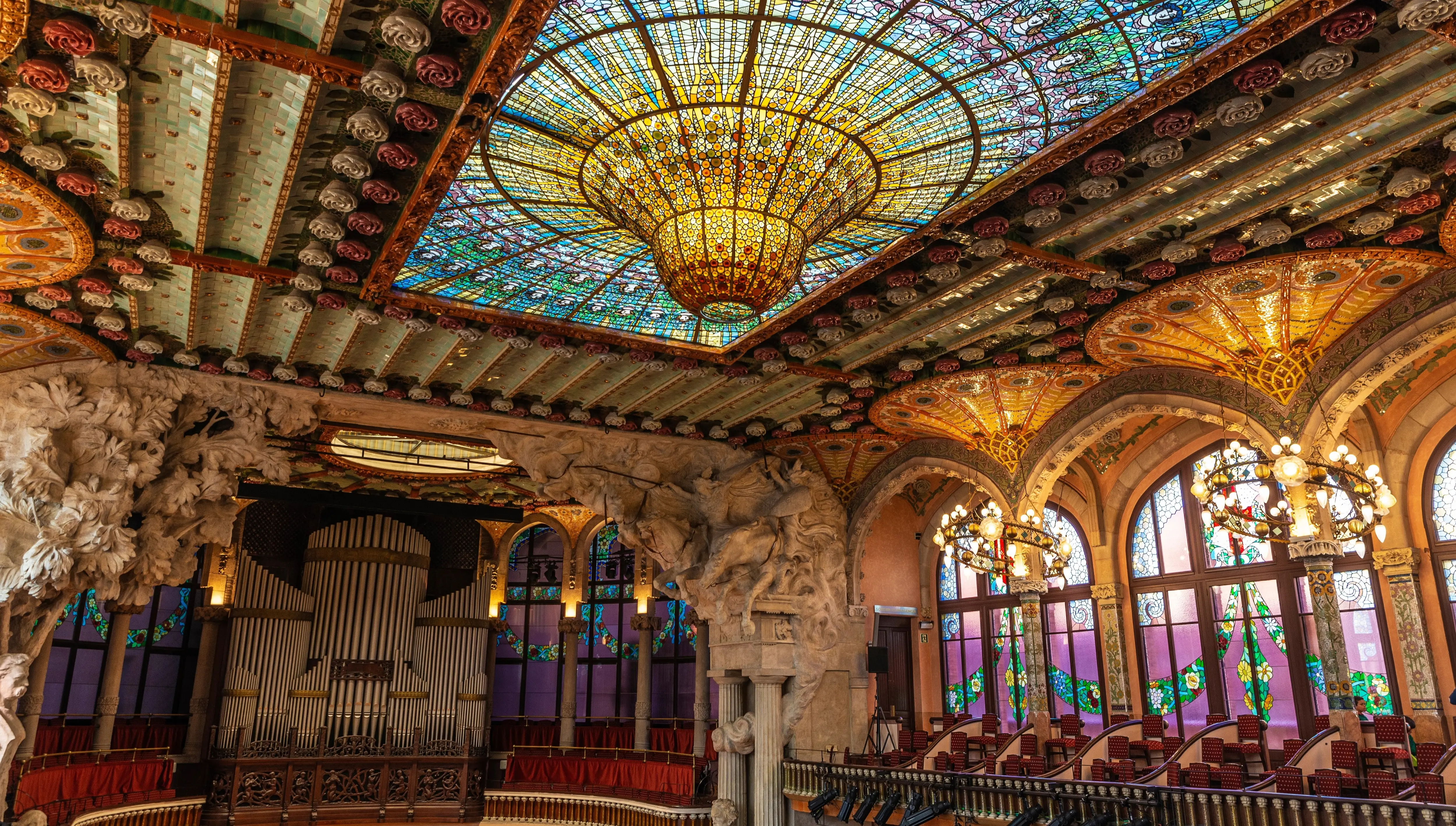
Hospital de Sant Pau: This UNESCO-listed hospital complex is a testament to Domènech i Montaner’s belief that beauty heals. Walking through its gardens and tiled pavilions, you can feel how architecture once served the spirit, not just the body.
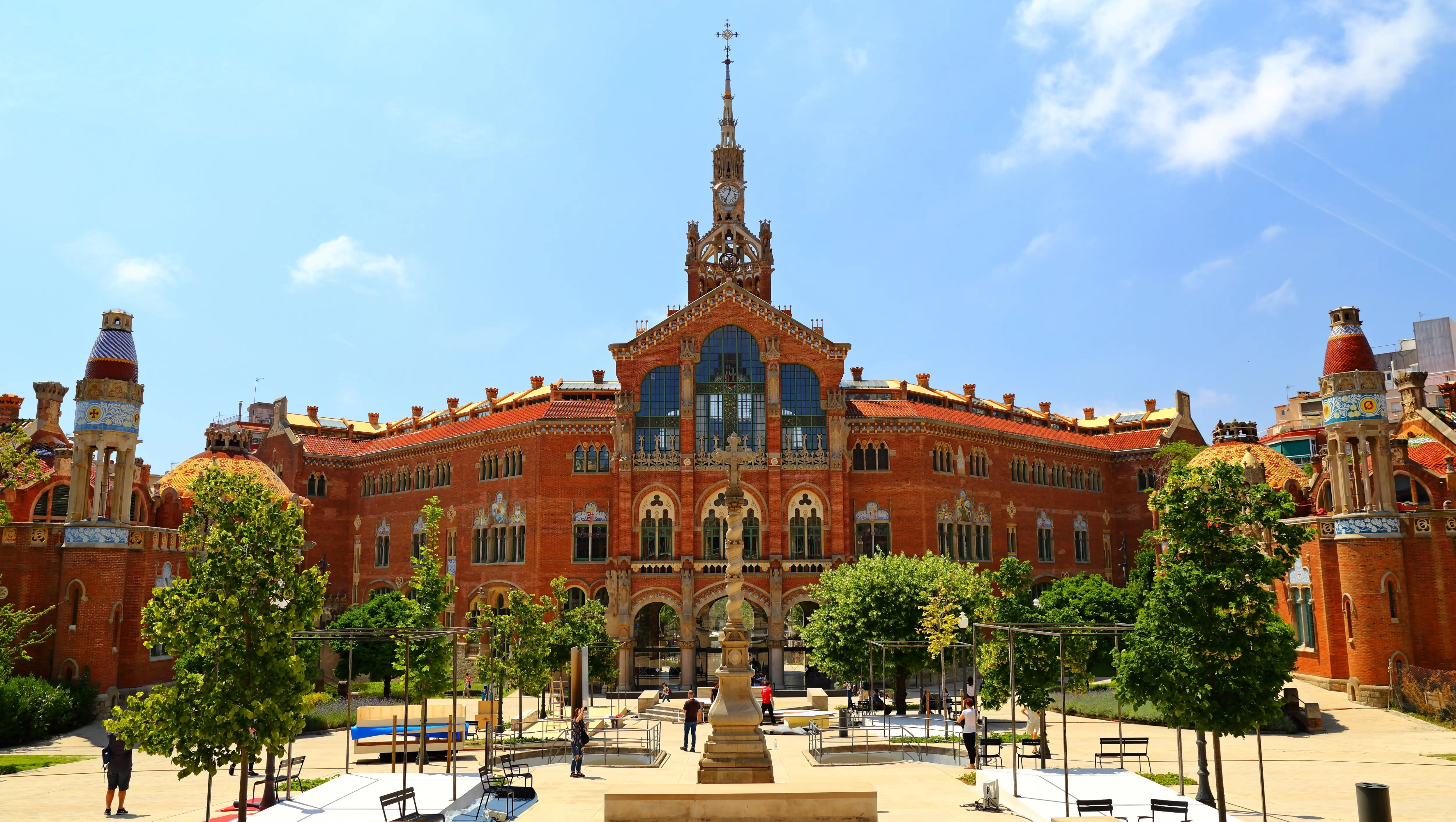
Casa Amatller & Casa Lleó Morera: Part of the “Block of Discord,” where three Modernist architects competed in creativity. Casa Amatller fuses medieval charm with modern comfort, while Casa Lleó Morera dazzles with intricate stonework and floral mosaics that seem to bloom eternally.
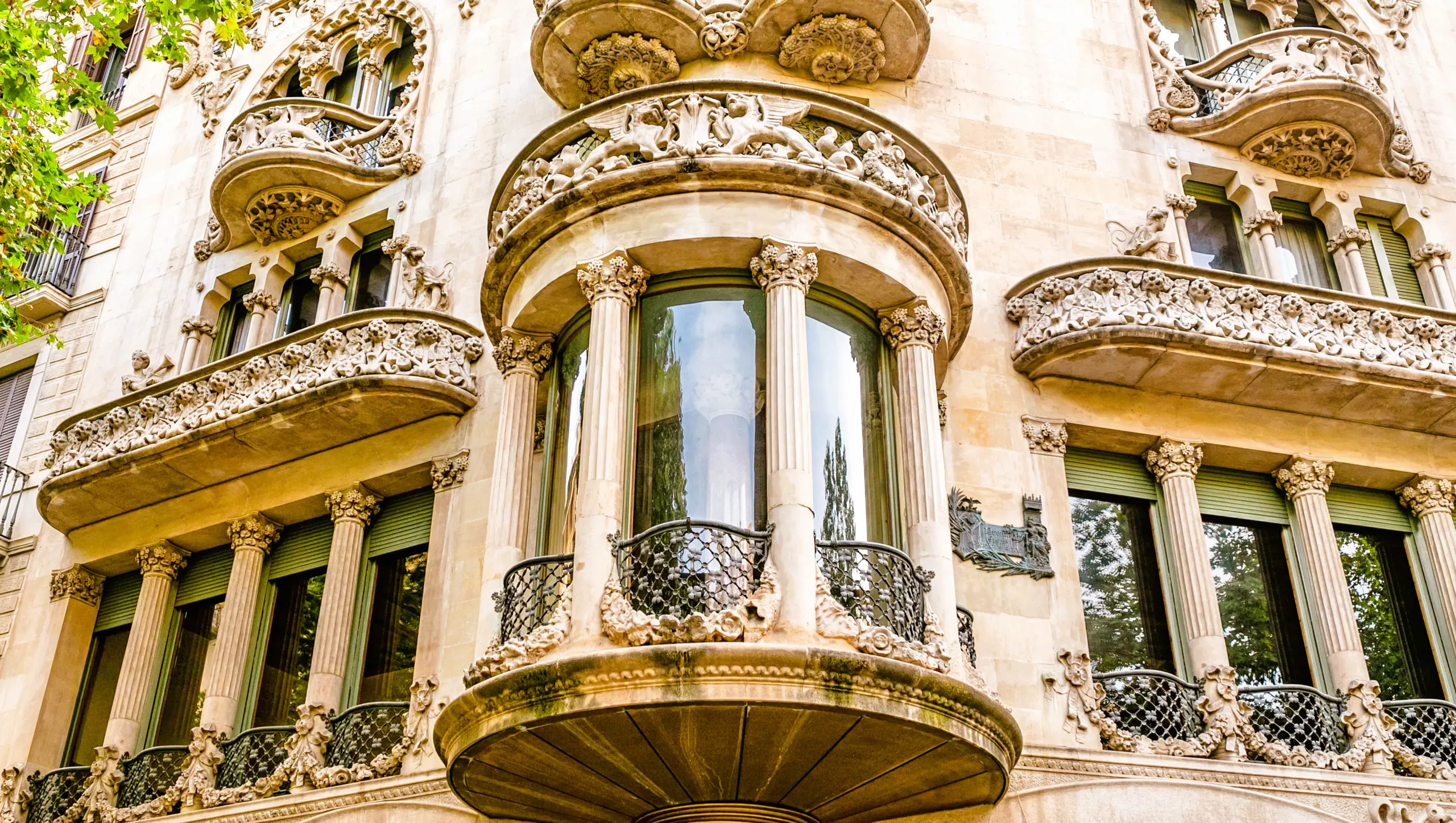
Hidden Gems: For something quieter, visit Casa Vicens, Gaudí’s first major project – a colorful blend of Moorish and natural motifs – or Palau Baró de Quadras, with its sculpted façade that feels like a fantasy frozen in time. Even the wrought-iron lampposts in Plaça Reial bear Gaudí’s unmistakable touch.
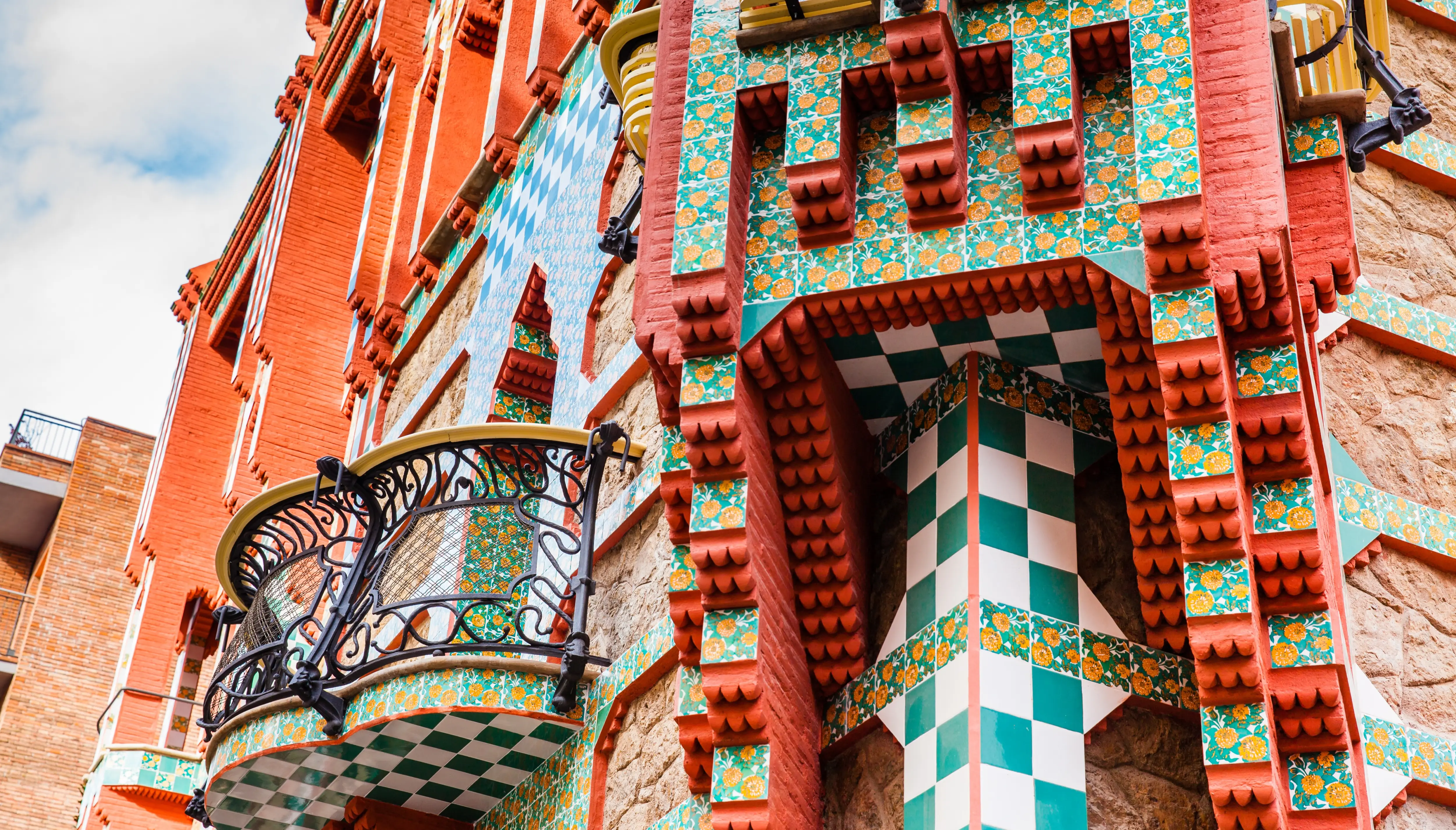
Beyond Architecture
Catalan Modernism’s influence went far beyond buildings. It flowed into every art form: painting, design, literature, and even café culture.
- Painters like Ramon Casas and Santiago Rusiñol captured the spirit of their age, filling canvases with portraits of modern life and poetic melancholy.
- Designers such as Gaspar Homar and Joan Busquets turned furniture into sculpture, creating dining sets and lamps that matched the architecture they adorned.
- Cafés like Els Quatre Gats became creative epicenters: smoky, lively spaces where artists like Picasso debated philosophy, politics, and aesthetics late into the night.
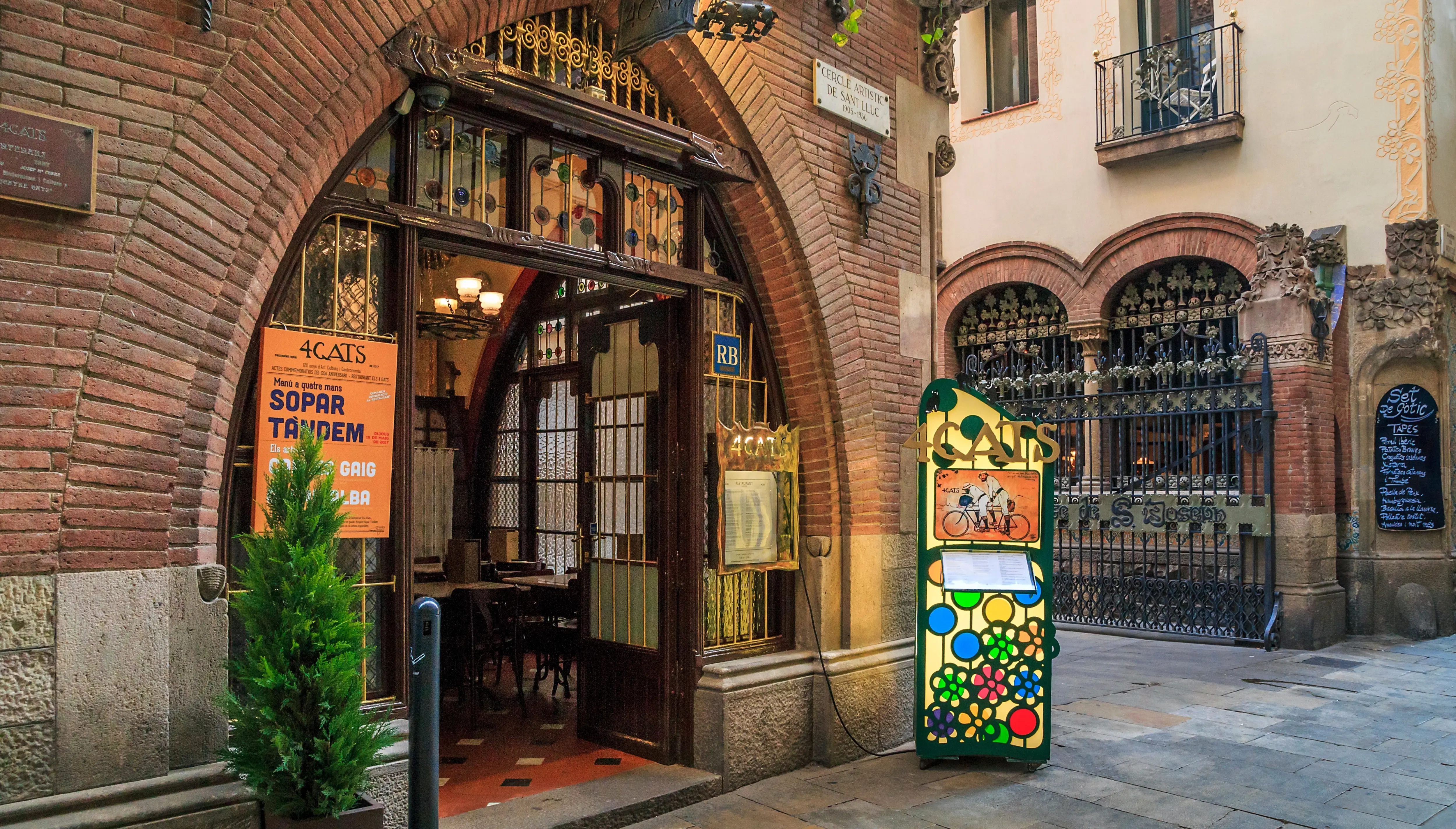
Even today, Barcelona carries this DNA, from the ceramic benches in Park Güell to the typography on shop signs. Catalan Modernism made art part of the city’s everyday rhythm.
Through My Eyes
Wandering through Barcelona, you can feel Catalan Modernism in the air. It’s in the curve of a balcony, the shimmer of a mosaic, the soft light falling through a stained-glass window. One morning, I found myself on Passeig de Gràcia, coffee in hand, the façades of Casa Batlló and Casa Amatller glowing under the early sun. The colors changed by the minute – blues, golds, and pinks – as if the city itself were alive and breathing art.
Later that afternoon, inside Palau de la Música Catalana, I looked up at the stained-glass dome – a sun suspended in color – and felt completely spellbound. It struck me that Catalan Modernism isn’t a frozen chapter in history; it’s a living dialogue between art and life. Every curve, every flourish, every carved angel seems to whisper: beauty matters!
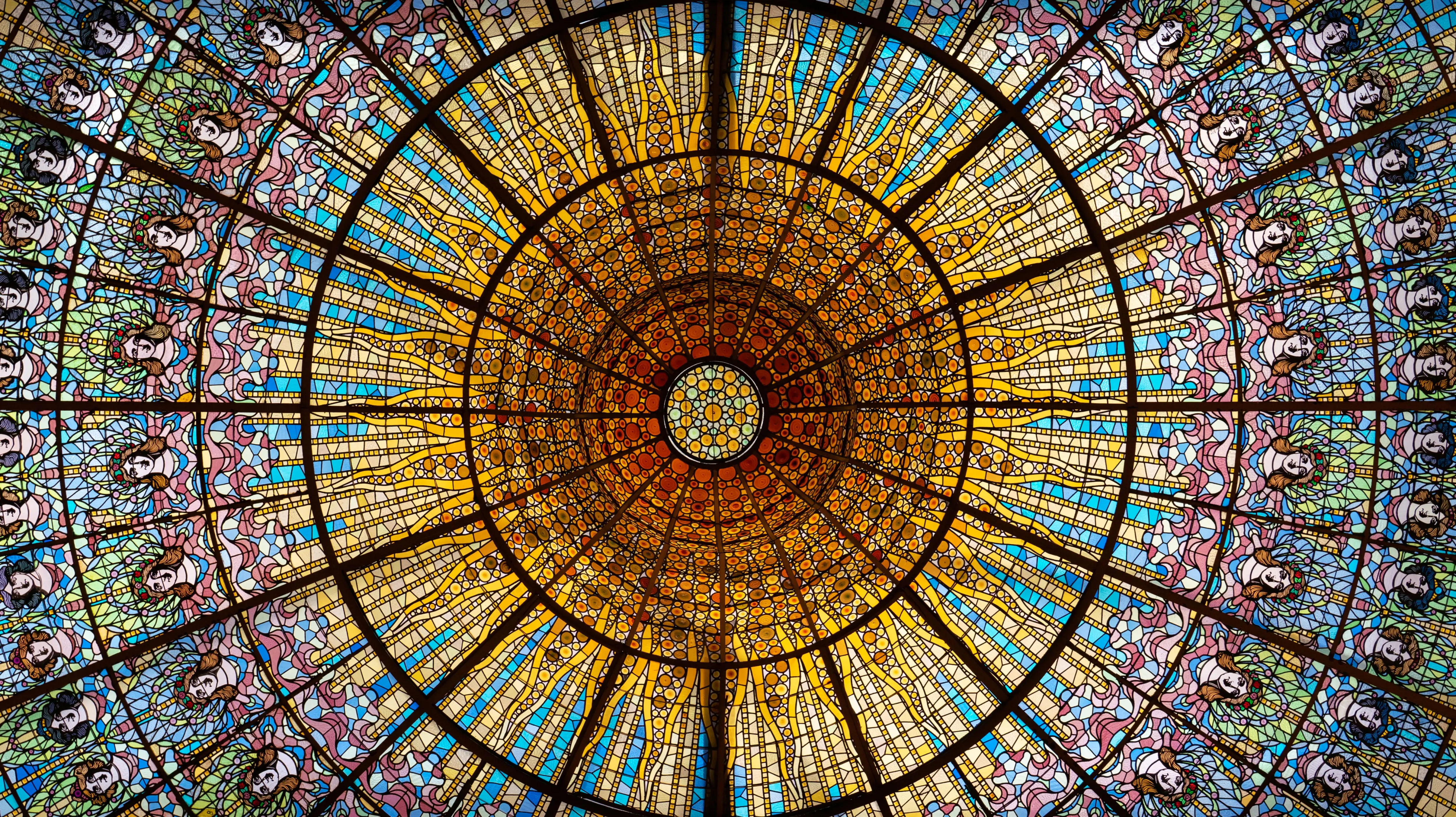
Final Thoughts
Catalan Modernism isn’t just an architectural style, it’s Barcelona’s heartbeat. It teaches us that art doesn’t have to be distant or confined to museums. It can live in the streets we walk, the homes we build, the way we see the world.
What I love most about this movement is its optimism, the belief that creativity can elevate daily life, that imagination can be a form of resistance, that beauty has purpose.
Next time you’re in Barcelona, don’t rush past. Look up at a balcony. Run your hand along a tiled wall. Step into a courtyard and listen to the echo of color and light. Because here, art isn’t separate from life – it is life!
Have you experienced Catalan Modernism in Barcelona? Which masterpiece moved you the most: Gaudí’s Sagrada Família, Domènech’s Palau de la Música, or perhaps a hidden gem in the Eixample? Share your thoughts below, I’d love to hear your reflections.
xoxo,
Bubbly🎈

